Best Way to Train Your Dog for Agility: Effective Techniques Explained
Agility training offers a unique combination of physical exercise, mental stimulation, and bonding opportunities for you and your dog. It is a dynamic sport where your dog navigates a course of obstacles under your guidance. This training not only enhances your dog’s physical abilities and coordination but also improves obedience and strengthens your relationship.
Incorporating agility into your dog’s routine can benefit dogs of all shapes, sizes, and breeds. The key is to adapt the training to suit your dog’s pace and enthusiasm. Start simple, introducing your dog to basic obstacles and commands, and gradually increase the complexity as your dog becomes more comfortable and confident.
Effective agility training requires patience, consistency, and positive reinforcement. The use of treats and praise to reward successful navigation through obstacles reinforces your dog’s willingness to participate and excel in the agility course. Remember, agility should be fun for both you and your dog, creating an environment of excitement and learning.
Getting Started with Agility Training
Agility training is a dynamic way to strengthen your bond with your dog while providing physical and mental stimulation. Begin by understanding agility norms, then consider learning on your own or finding a professional trainer, and always assess your dog’s health and readiness.
Understanding the Basics
Before venturing into agility training, know that the basics are about communication and collaboration. This sport involves directing your dog through a course with various obstacles such as jumps, tunnels, and weave poles. Start with basic obedience; your dog should respond to commands like sit, stay, and come. Moreover, agility is suitable for many breeds; however, the size and energy level of your breed may influence the complexity of the courses you tackle.
Learning Agility on Your Own
If you’re a beginner, you can start small by setting up simple obstacles at home to introduce the concept of agility in a familiar environment. Use the American Kennel Club’s tips for practicing agility at home as a guide. Through DIY methods, build a relationship with your dog that’s rooted in trust and keen responsiveness.
Find an Agility Trainer Near You
When you’re ready to take training to the next level, consider joining a local agility class. A trainer can offer tailored advice and insight into the sport. To find an agility trainer near you, search for local clubs or consult resources like the American Kennel Club’s agility trainers directory. In Orlando, I recommend Beyond the Leash. This is where my dog has gone to training for several years. All the trainers are amazing and they also offer doggy daycare where they will practice agility with your dog.
Assessing Your Dog’s Health and Age
Before commencing agility training, a check-up with your vet is advised to ensure your dog is physically up for the challenge. Dogs of various ages can enjoy agility; however, young dogs should not jump until they are fully grown to avoid joint damage. Maintain a keen awareness of your dog’s health and energy levels to keep agility a positive experience.
Essential Agility Training Techniques
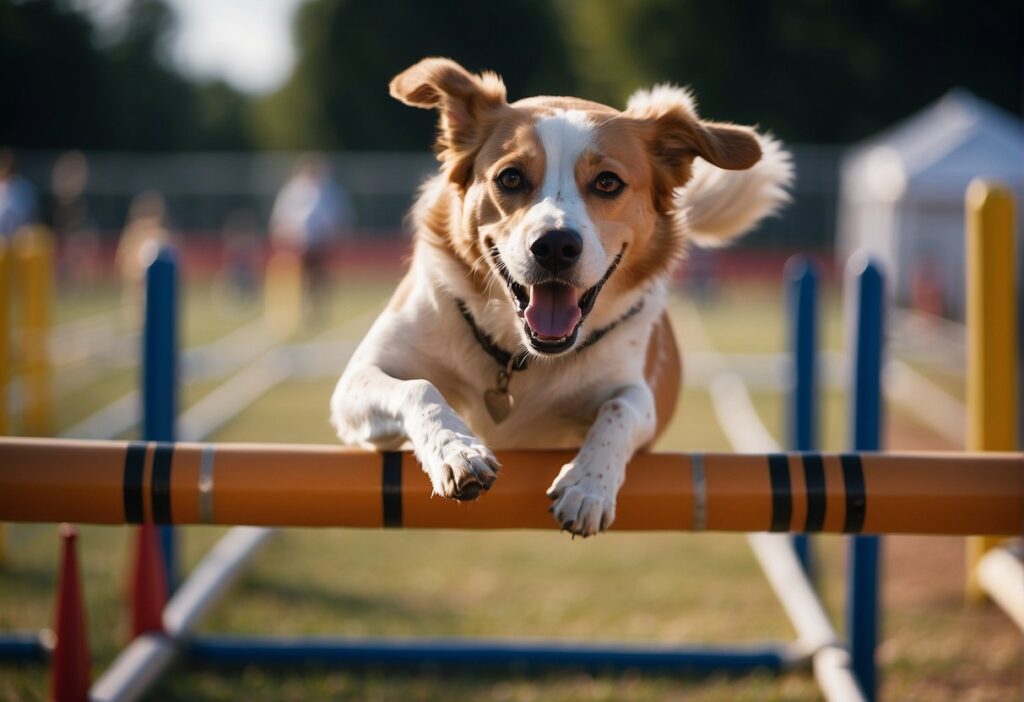
Agility training for dogs requires a systematic approach to mastering essential skills that enhance performance. Key techniques include establishing a foundation of obedience, ensuring your dog can maintain focus despite distractions, and adeptly navigating common training challenges.
Mastering Basic Commands
Before introducing agility equipment, your dog must understand and reliably respond to basic commands such as sit, stay, come, down, and heel. This forms the cornerstone of agility training, facilitating a smoother transition to more complex tasks. Rewards and praise are effective in reinforcing these commands, fostering a stronger bond between you and your dog.
- Sit: Essential for starting and pausing during training.
- Stay: Builds patience and control, particularly at the start line.
- Come: Ensures your dog returns to you regardless of distractions.
- Down: Useful for quick position changes and control.
- Heel: Keeps your dog at your side in between obstacles.
Developing Obedience and Focus
Agility training demands a high level of obedience and focus from your dog. Distractions are commonplace in competitive environments; thus, training in varied surroundings can bolster their ability to maintain attention. Encourage and reward eye contact, which helps your dog concentrate and follow your cues promptly.
- Attention-grabbing exercises: Practice in environments with moderate distractions.
- Eye contact: Use a “watch me” command to improve focus.
- Obedience training: Regular sessions increase responsiveness to your commands.
Overcoming Common Challenges
Throughout your agility training journey, you’ll encounter a range of hurdles that can test your patience and your dog’s resolve. Whether it’s a lack of interest in certain obstacles or an unexpected fright, use positive reinforcement to guide and reassure your dog. Tips for success include keeping each training session upbeat and ending on a positive note to ensure your dog remains eager to learn.
- Patience with new obstacles: Introduce challenges gradually, pairing them with rewards.
- Distraction proofing: Increase the level of distractions over time to build resilience.
- Bonding activities: Spend quality time outside of training to strengthen your relationship.
Agility Equipment and Setting Up
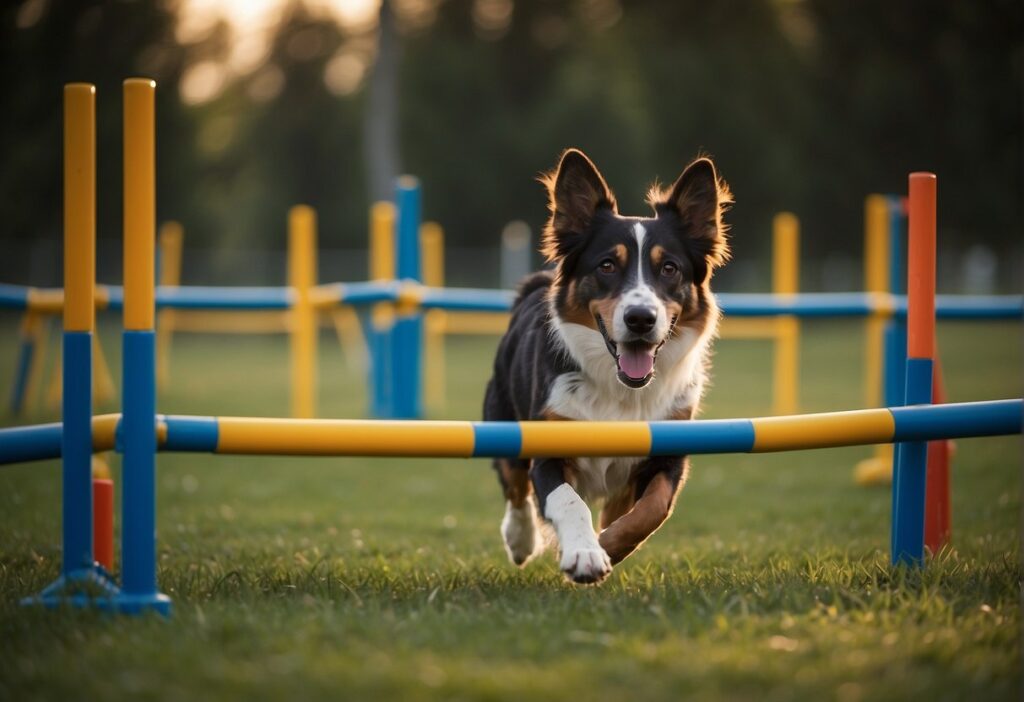
In agility training, the proper setup of equipment is crucial for effective practice sessions. Your setup will mimic competition conditions and ensure your dog’s safety.
Navigating Through Obstacles
Your main focus will be on guiding your dog through various obstacles. These obstacles will include jumps, tunnels, weave poles, and an A-frame, all of which test your dog’s coordination and speed. To ensure a seamless experience, familiarize your dog with each obstacle individually before combining them into an obstacle course.
Selecting the Right Equipment
When choosing equipment for training, consider durability and safety. For jumps, seek adjustable options that can grow with your dog’s ability. Weave poles should be spaced correctly to match your dog’s stride. Agility Dog Training Equipment on Amazon offers a variety of choices that can fit your needs. Additionally, tunnels should be stable and made of tear-resistant fabric, while the tire jump needs to be of appropriate size to safely fit your dog.
Creating a Home Training Space
Designate a specific area in your yard for home training. The space should be large enough to set up multiple agility courses. Flatten the land to reduce the risk of injury, and if you’re limited on space, opt for collapsible equipment that can be easily stored. Dog Agility Equipment for Backyard Training can give you practical layout ideas. Ensure the obstacle course layout has a logical flow and gradually increases in complexity as your dog progresses in their training sessions.
Preparing for Agility Competitions
Before stepping into the ring, your preparation should be thorough, understanding not only the rules but also building up your dog to their first event while ensuring their peak performance is maintained.
Understanding Competition Rules
Getting familiar with the specific rules of the competition organization is crucial. For instance, the United States Dog Agility Association (USDAA) sets forth various rules that may differ from those of other organizations. Rules often include specifics about contact obstacles, which your dog must navigate, such as the A-frame and seesaw, and the pause table, where your dog must remain in a stationary position for a set amount of time.
Building up to Your First Event
Your journey to your first agility trial should begin with foundational agility classes to help your dog learn the essential skills. Start by focusing on building confidence and a strong handler-dog relationship. Early training focuses on basic commands and gradually introduces agility equipment. As energy and skill levels improve, increase the challenge by chaining obstacles together, mimicking competition setups, and practicing under variably stressful conditions to simulate real-world trials.
Maintaining Your Dog’s Performance
Success in agility sports isn’t just about the initial training; it’s about ongoing work. Keep your dog’s performance sharp by:
- Regularly attending agility classes to stay in tune with current techniques and practices.
- Setting a fitness regime to maintain the high levels of energy and stamina that agility competitions require.
- Focusing on safety, ensuring that your dog is not pushed too hard to avoid injury.
- Incorporating rest and recovery into your schedule to avoid stress and burnout.
Your dog’s continued success in dog agility competition relies on consistent practice, a happy and healthy state of mind, and a clear understanding of the expectations of these dynamic agility sports.

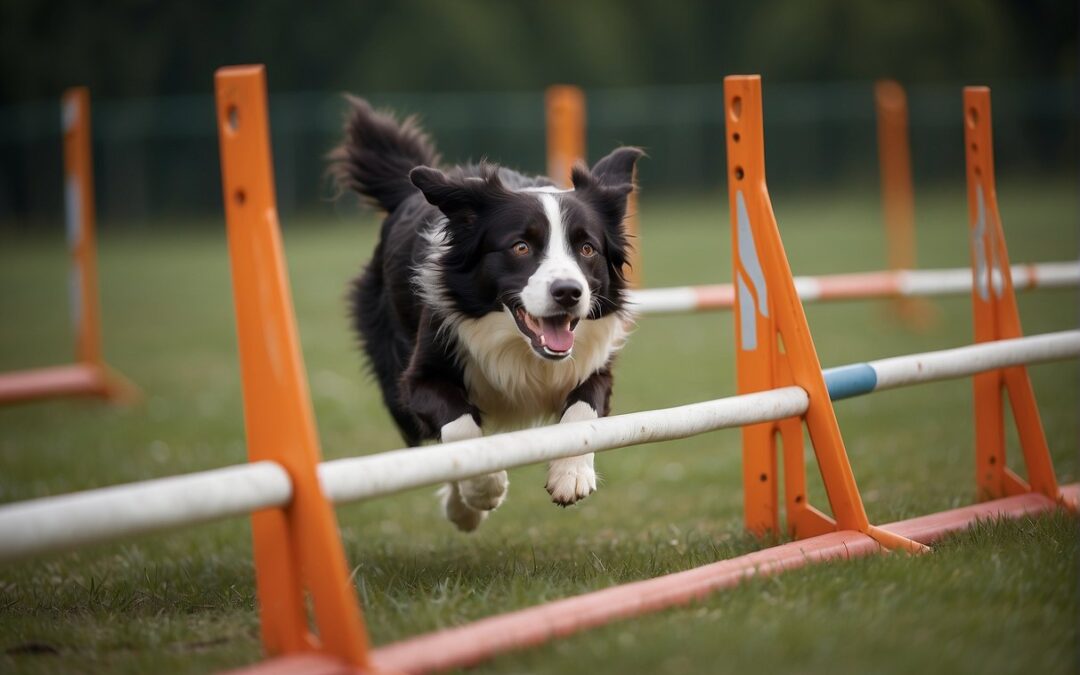
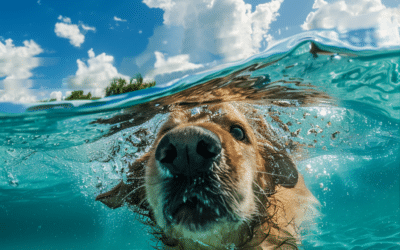
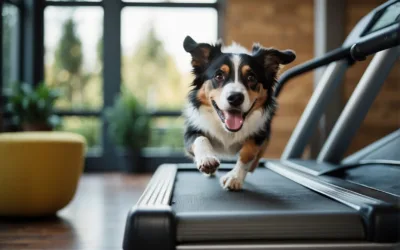
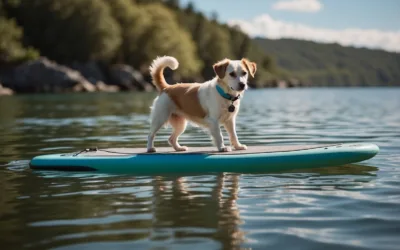
Recent Comments